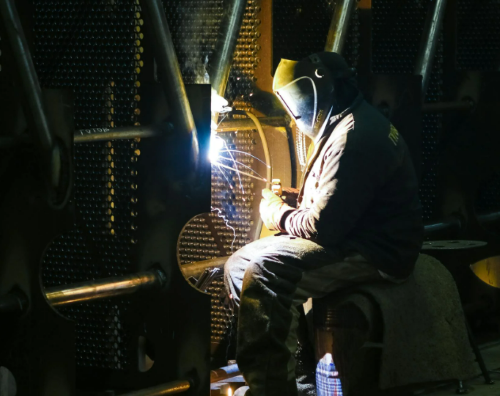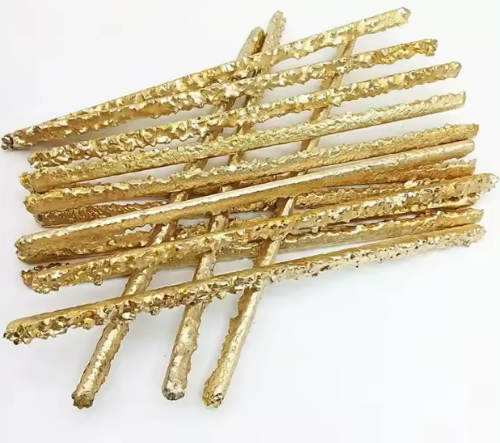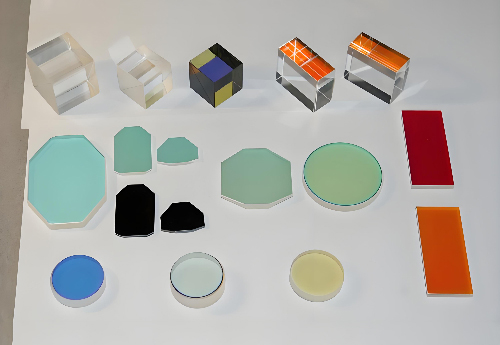An Introduction to Hard Facing Materials
Introduction
In the realm of industrial operations and maintenance, durability is not just a desirable attribute—it's a necessity. One key strategy for achieving this durability is hard facing, a process that significantly enhances the wear resistance of equipment surfaces.

This article explores its concept, benefits, the common materials used, the process of application, and its widespread uses across various industries.
What Is Hard Facing?
Hard facing is a welding process used to apply a layer of wear-resistant material to the surface of a metal part or equipment. This technique is designed to protect against wear caused by abrasion, impact, erosion, and other forms of degradation that components encounter in harsh working environments.
By depositing a hard layer on a softer base metal, this process extends the service life of critical components, reducing the need for frequent replacements and downtime.

Hard facing material refers to a specific type of wear-resistant alloy or composite applied to the surface of a softer base metal. Common types include carbides (such as tungsten carbide and chromium carbide), metal alloys (including nickel-based, cobalt-based, and iron-based alloys), and metal matrix composites (MMCs) that blend metals with hard particles.
The choice of hard facing material is critical and depends on the specific wear challenges and operating conditions the component will face.
What Are the Advantages?
Hard facing materials bring many important benefits to industrial equipment, making them more durable and efficient. The main advantages are:
- Longer Life for Parts: Hard facing helps parts last longer, especially if they face a lot of wear from things like abrasion, impacts, or corrosion. This means you don't have to replace or repair them as often.
- Saves Money: Since parts last longer, you don't need to buy new ones or stop work to fix them as much. This saves a lot of money on both parts and labor.
- Better Performance: Parts with hard facing work better for longer. They resist wear more effectively and keep their shape and smoothness.
- Tailored Protection: You can customize the hard facing to meet the exact needs of your equipment. This includes what kind of wear it needs to resist, like scratches, erosion, or bumps, and the conditions it works in.
What Are Key Hard Facing Materials Used in Industry?
Key hard facing materials used in industry are selected for their exceptional wear resistance and durability under harsh operating conditions. These materials are critical in prolonging the life of equipment and reducing maintenance costs. The most common types include:
1. Carbides:
- Tungsten Carbide is very hard and resists abrasion well. Industrial workers often use it for mining, drilling, and cutting.
- Chromium Carbide resists wear well, especially at high temperatures. It is a good choice for places with lots of corrosion and oxidation.
2. Alloys:
- Nickel-Based Alloys resist corrosion well. They work well in hot environments and where there are corrosive materials.
- Cobalt-Based Alloys (Stellite) keep their hardness even at high temperatures. This makes them perfect for cutting tools and engine parts.
- Iron-Based Alloys are a more affordable option. They offer good wear resistance and can handle different types of wear.
3. Metals and Metal Matrix Composites (MMCs):
- Bronze and Brass are used for their resistance to sliding wear. They are common in bearing surfaces and bushings.
- Metal Matrix Composites mix metal with hard particles like carbides. This mix gives them a good balance of toughness and wear resistance.
Each of these materials (See Table 1) is chosen based on the specific requirements of the application, including the type of wear (abrasion, impact, erosion, etc.), the operating environment (temperature, presence of corrosive substances), and the mechanical properties needed. Stanford Advanced Materials (SAM)is a reliable supplier in this sector. We offer quality hard facing materials, alongside custom solutions for you to extend the service life of your equipment.
Table 1. Common Hard Facing Materials
Types | Examples | Properties |
Carbides | - Chromium Carbide | - Extreme hardness - High wear resistance - Good performance at high temperatures |
Alloys | - Nickel-Based Alloys - Cobalt-Based Alloys (Stellite) - Iron-Based Alloys | - Corrosion resistance (Nickel) - High-temperature hardness (Cobalt) - Versatile wear resistance (Iron) |
Metals & MMCs | - Bronze and Brass | - Resistance to sliding wear (Bronze, Brass) - Balance of toughness and wear resistance (MMCs) |
How to Apply Hard Facing Techniques?
The process can be executed using various welding techniques. The primary methods include:
- Welding Overlay: This involves the deposition of hard facing material using arc welding processes such as shielded metal arc welding (SMAW), gas metal arc welding (GMAW), or flux-cored arc welding (FCAW). It's a versatile method applicable to a wide range of components.
- Thermal Spraying: Thermal spraying techniques, including plasma spraying and high-velocity oxygen fuel (HVOF) spraying, apply the material in a molten or semi-molten state to the surface. This method is ideal for applying coatings with minimal heat impact on the substrate.
- Laser Cladding: Laser cladding uses a high-intensity laser to melt the material, which then bonds to the base metal. This method offers precise control and minimal dilution between the coating and substrate, suitable for high-quality finishes.
How Are Hard Facing Materials Used?
These materials find applications across a broad spectrum of industries, each benefiting from the enhanced durability it provides:
- Mining and Construction: Equipment like drills, buckets, and blades are hard faced to withstand the abrasive and impact wear from rocks, minerals, and construction materials.
- Oil and Gas: Components such as drill bits, valves, and pump impellers are protected against wear and corrosion, ensuring reliability in challenging environments.
- Agriculture: Farming implements, including plowshares and harvester blades, receive hard facing to resist wear from soil and crop material, extending their usable life.
- Manufacturing: Tools and dies are frequently hard faced to maintain dimensional accuracy and surface quality, critical for producing high-quality products.
Conclusion
Hard facing represents a pivotal technology in the pursuit of maximizing equipment durability. By selecting the appropriate hard facing materials and processes, industries can significantly extend the lifespan of their components, reduce maintenance costs, and ensure continuous production. As advancements in materials science and welding technologies continue to evolve, these materials' potential to contribute to industrial sustainability and productivity grows ever greater.


